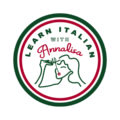First Course in Italian: A Guide to Greetings, Introducing Yourself, and Basic Conversations
If you’re just starting to learn Italian, one of the best ways to get started is by learning how to greet others, introduce yourself, and engage in basic conversations. In this First Course in Italian, we will cover the essentials of Italian conversation, including greetings, introducing yourself, and common phrases for everyday situations, with lots of examples to help you practice and improve your skills.
Table of Contents
Learn Greetings in Italian
To start your first course in Italian, you must learn greetings. They are an important part of any conversation, and they set the tone for the rest of the conversation. In Italian, common greetings include:
- “Ciao” (Hello/Goodbye)
- “Buongiorno” (Good morning)
- “Buona sera” (Good evening)
For example, if you meet someone in the morning, you could say “Buongiorno, come stai?” (Good morning, how are you?). And if you’re leaving, you could say “Ciao, a presto” (Goodbye, see you soon).
Introducing Yourself in Italian
Let’s continue this first course with learning self-introduction. When introducing yourself in Italian, it’s important to include your name, where you’re from, and what you do. A basic introduction might look like this:
“Ciao, mi chiamo [your name]. Sono di [where you’re from]. Lavoro come [what you do].” (Hello, my name is [your name]. I’m from [where you’re from]. I work as [what you do].)
For example, “Ciao, mi chiamo Maria. Sono di Roma. Lavoro come insegnante” (Hello, my name is Maria. I’m from Rome. I work as a teacher).
First Course in Italian: Basic Vocabulary
In addition to learning grammar, greetings, and common phrases, it’s important to build a foundation of basic vocabulary during this first course in Italian. This includes words and phrases for everyday situations, such as asking for directions, ordering food, and shopping. Some essential vocabulary to start with includes:
- “Per favore” (Please)
- “Grazie” (Thank you)
- “Si” (Yes)
- “No” (No)
- “Caffè” (Coffee)
- “Acqua” (Water)
- “Pasta” (Pasta)
- “Vino” (Wine)
For example, when ordering a coffee, you could say “Per favore, un caffè.” (Please, a coffee.) And when asking for directions, you could say “Scusi, dove si trova il museo?” (Excuse me, where is the museum?).
First Course in Italian: Basic Conversations
In addition to this first course in Italian, let’s see some common phrases and expressions used in everyday Italian conversations. Some of these include:
- “Come ti chiami?” (What’s your name?)
- “Come stai?” (How are you?)
- “Bene, grazie” (Good, thank you)
- “Mi piace [activity/thing]” (I like [activity/thing])
- “Non parlo molto bene italiano” (I don’t speak Italian very well)
For example, if someone asks you how you are, you could respond with “Bene, grazie. E tu?” (Good, thank you. And you?). Or if someone asks what you like to do, you could say “Mi piace viaggiare” (I like to travel).
This is the end of your first course in Italian. But it is only the begging of your Italian journey! Learning Italian can be an enjoyable and fulfilling experience, and by focusing on the fundamentals of grammar, vocabulary, greetings, and basic conversations, you will be well on your way to becoming proficient in the language. Here are some tips to help you along the way:
- Practice is Key: The more you practice speaking, listening, and writing in Italian, the quicker you will improve. Try to find opportunities to use the language in real-life situations, such as with a tutor, a language exchange partner, or through online resources.
- Immerse Yourself: Immerse yourself in the language by watching Italian TV shows, movies, and listening to music. This will help you get a feel for the rhythm and sound of the language and improve your listening skills.
- Be Patient: Learning a new language takes time and effort, so be patient with yourself. Don’t become discouraged if you don’t understand everything right away – just keep practicing, and you’ll get there.
- Utilize Resources: There are many resources available to help you learn Italian, such as textbooks, language learning apps, and online courses. Make use of these resources to reinforce what you’ve learned and get additional practice.
- Embrace Mistakes: Making mistakes is a natural part of the learning process. Don’t be afraid to make them – instead, use them as an opportunity to learn and grow.
In conclusion, learning Italian can be a delightful and exciting journey, and by focusing on the basics and practicing regularly, you will be well on your way to mastery. So, what are you waiting for? Start your Italian language learning journey today!

